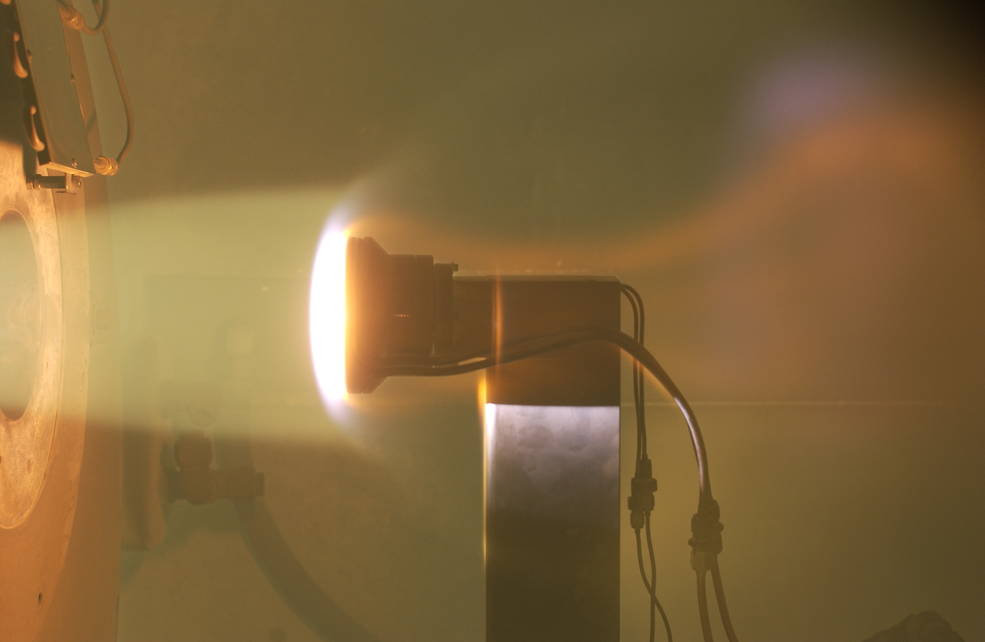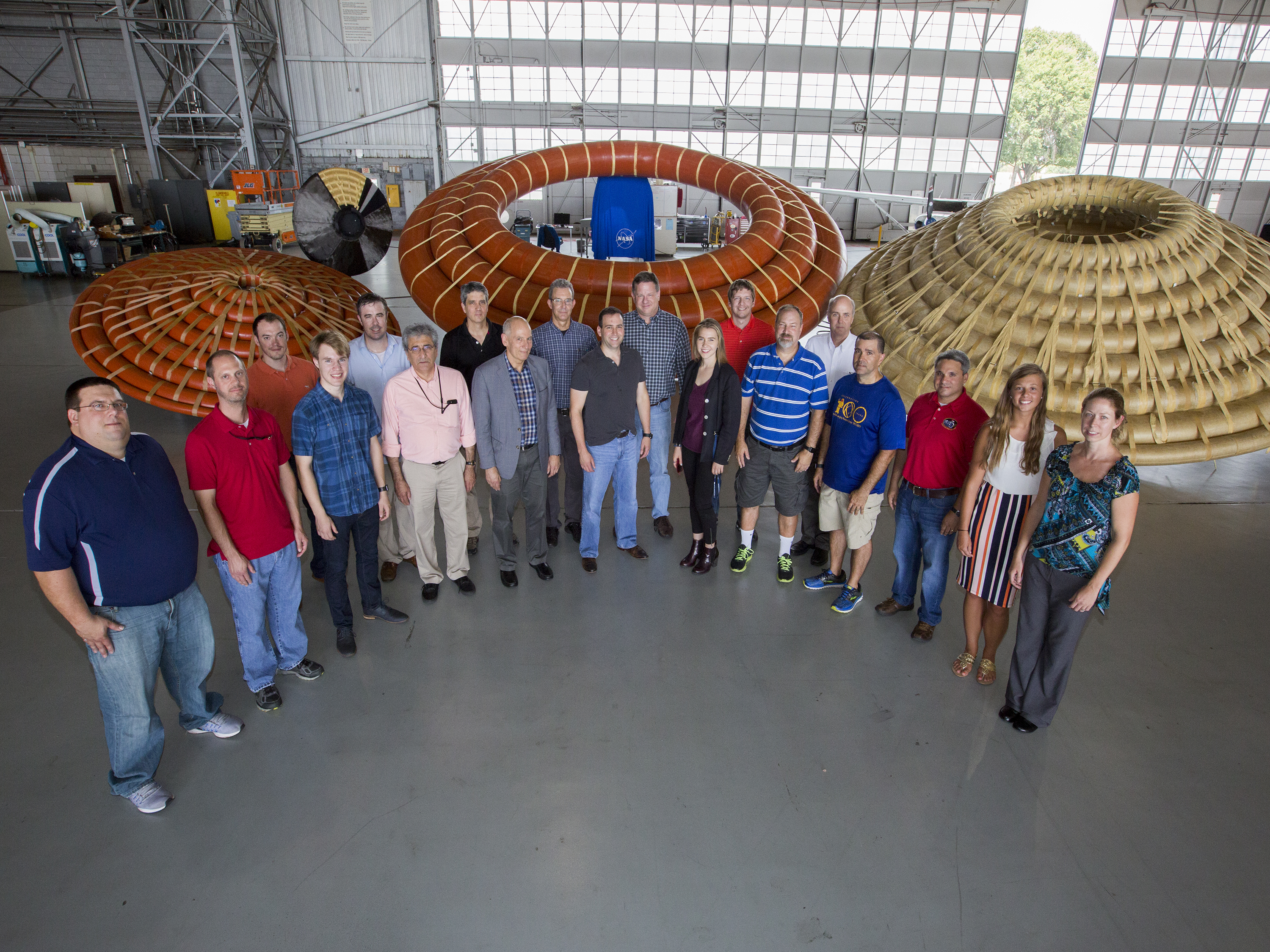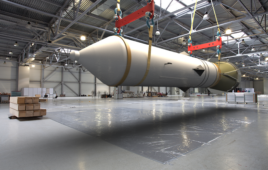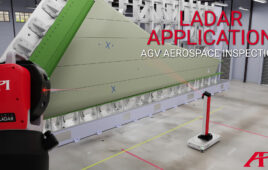NASA recently tested the Hypersonic Inflatable Aerodynamic Decelerator (HAID) heat shield, an aeroshell which could be used to land relatively heavy payloads on Mars. At Boeing’s Large Core Arc Tunnel in St. Louis, Mo., small samples of the Flexible Thermal Protection System were subjected to plasma gas striking the material at speeds of up to Mach 4 and temperatures up to 2,700 F., similar to the speed and pressure of a drop onto Mars. NASA is working on improving heat shield material (currently “high temperature advanced flexible material systems,” in brief) and designing for manufacturability at a large scale. Data gathered in these real-world tests will be used to validate the mathematical models used in the design. More information can be found here.

Small samples of the HAID’s Flexible Thermal Protection System were subjected to high temperatures in recent tests at Boeing’s Large Core Arc Tunnel in St. Louis, Mo.. Image credit: Boeing

This image of members of NASA Langley’s HIAD team also shows models of the inflatable heat shield which they hope will be used to facilitate landings on Mars as part of the HAID project. Image credit: NASA/David C. Bowman
Filed Under: Aerospace + defense




